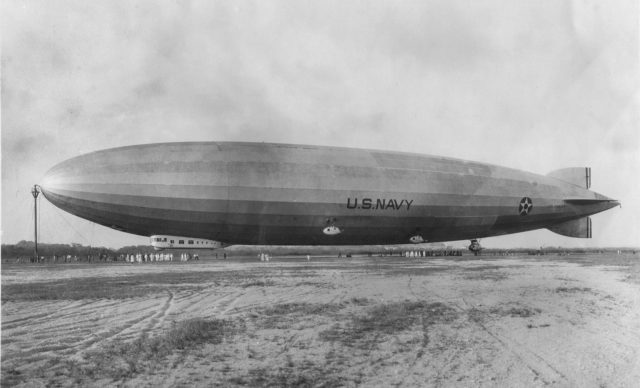Today, huge airships can be seen in sci-fi movies depicting parallel universes and James Bond films. But in the period between WW1 and WW2 they were popular and even competed with the other means of transport.
During the 1930s, Zeppelin transport, especially the transatlantic one, had few advantages over the more conventional forms of transport. Zeppelins could carry more passengers than other aircraft in that time and offered similar services to those of the ocean liners and trains (private cabins, dining rooms, observation decks).
Besides the provided comfort, airships were also more energy-efficient than planes and moreover, faster than ocean-liners.
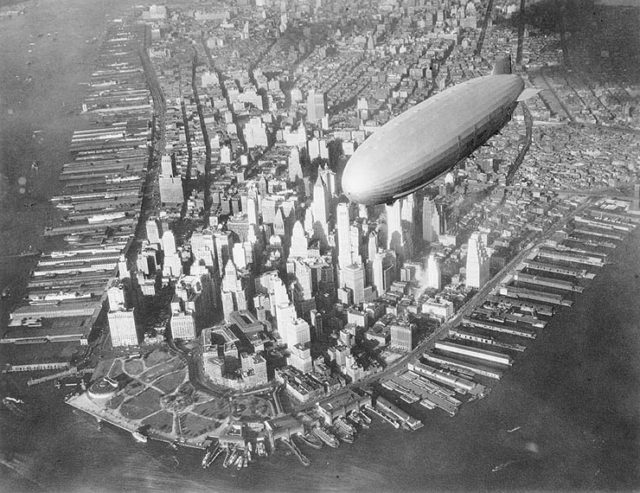
Airships became outdated and completely unused mainly as a result of the Hindenburg disaster and the forthcoming WW2.
After WW1, the Treaty of Versailles restricted Germany to construct airships which surpassed the capacity of million cubic ft. The ones that were in their ownership were either destroyed or given as war reparations to the allied forces.
In 1919, most of the airships that were still under construction in the Luftschiffbau Zeppelin (the zeppelin company) were sabotaged by their crews and never flew.
Subsequently, the United States Navy never received an airship, so a new was ordered as a replacement for the sabotaged airships.
Because the Treaty of Versailles had prevented Germany to build military airships, the new one, labeled LZ 126, was made as a passenger airship.
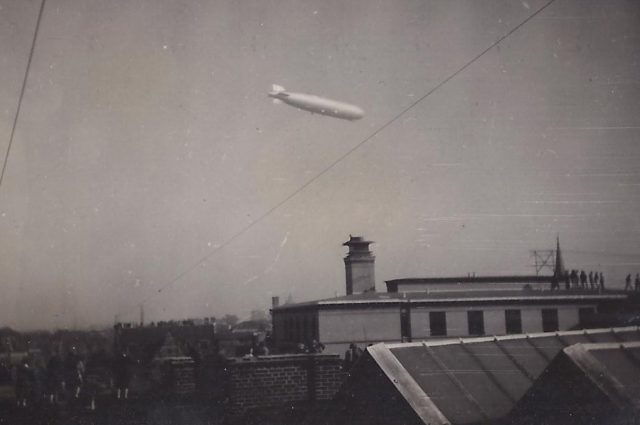
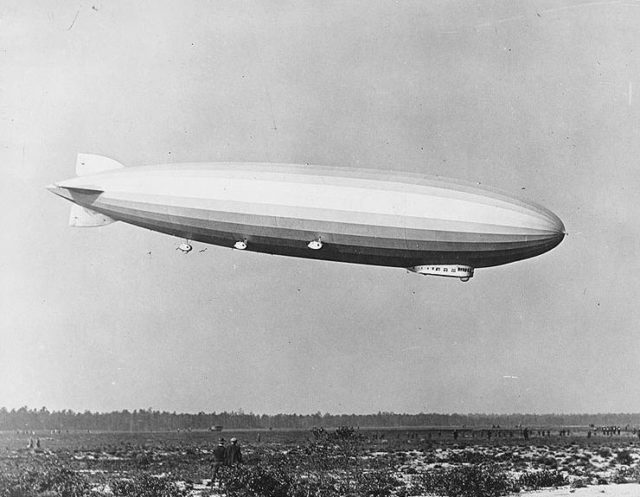
This airship (under the name LZ 126) made its maiden flight on 27th August, 1924 while on 12th October it started the transatlantic delivery flight to the US Naval Air Station at Lakehurst, New Jersey.
The LZ 126 was commissioned to the US Navy on 25th November, 1924 at Anacostia, D.C. under the Name USS Los Angeles. It became the second US vessel which carried this name. After the ship arrived in the United States, few changes and modifications were made.
The Hydrogen that the Germans used as a lifting gas for the airship was replaced with Helium, which was a lot more safer but heavier, so the max payload of the vessel was reduced.
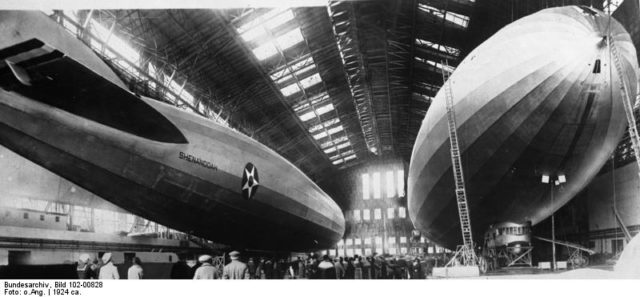
Also, equipment that was separating water from the exhaust fumes of the engines was added. This distillate was used as a compensation for the lost weight from fuel consumption instead of venting the excess helium.
The gondola of the airship provided accommodation for passengers and rooms for the crew that was off-duty. The USS Los Angeles was registered as a passenger airship, so the Navy couldn’t use it for any military operations. Instead, it was only used for commercial traveling and research.
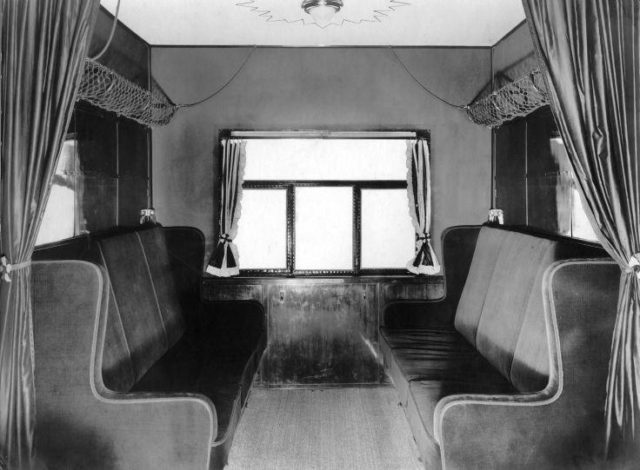
During its service, the airship was used for passenger flights, but mainly as an observatory, an experimental platform and as a training ship for crews of other airships.
A small incident happened in August, 1927 while the Los Angeles was tethered at the Lakehurst high mast. A strong wind managed to lift the tail of the airship higher into the colder air above it, which caused the entire vessel to stand vertical for a while but without any significant damage.
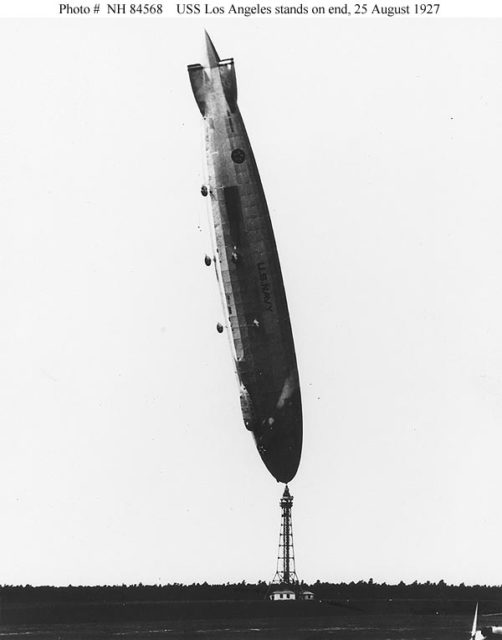
That probably inspired the Berliner Illustrirte Zeitung to make an April’s fool photo of the Los Angeles lifting a boat, which of course, was not real. Although the airship was tethered to a boat before, it has never managed to lift one.
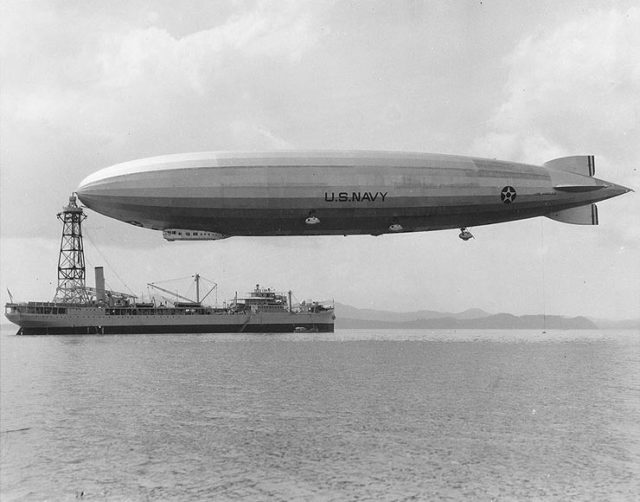
The Los Angeles managed to log 4, 398 flight hours and cover a total distance of 172,400 nautical miles (319,300 km). Some of its journeys included return trips to places such as Panama, Costa Rica and Bermuda.
In 1932, the US Navy decided to decommission the Los Angeles, but soon they brought it back to business after their USS Akron airship crashed the following year. The recommission lasted shortly and in 1939 it was permanently decommissioned and dismantled in its hangar.
USS Los Angeles became the Navy’s longest serving rigid airship, sailing across the sky for 8 years.
Unlike many other airships (such as he Shenandoah, Akron, and Macon), the Los Angeles didn’t end its service in fire but was retired without any accidents.
